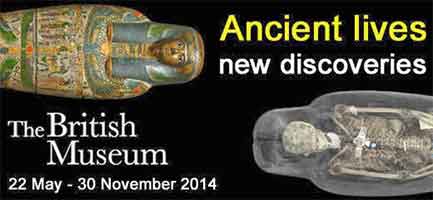Rare diseases – why bother?
Dr Francis Agius MD MSc (Public Health), FFPH, MMCFD, MSc (Ophthalmology)
Definition
Rare diseases are those diseases that affect a small number of people when compared to the general population. In 2009 the EU adopted the definition that a rare disease has a prevalence of less than five persons being affected out of 10 000 persons1. An important estimation is that 8% of the population is born with, or develops, a rare disorder over their lifetime. Thus, it is estimated that around 30 million Europeans suffer from a rare disease. Based on the same assumption, the Maltese rare disease population should be around 25,000 patients. The EU definition further states that rare diseases are life-threatening or chronically debilitating conditions. About 80% of rare diseases have a genetic origin, being either monogenic or polygenic.
Relevance to general practice and general practitioners
Published information about the primary care role in rare diseases is very scant. The response to rare disease by organisations such as the US National Organization of Rare Disorders [NORD] and the European Organisation for Rare Diseases [EURORDIS] has focused on making information more accessible and on coordinating research efforts into rare conditions. This approach seeks to connect isolated patients with specialised knowledge and specialist clinicians. However, general practitioners also see rare conditions frequently2,3. EURORDIS is the pan-European organization established through a coalition of patient-support groups and the European Union back in 1997. Eurordis lists the problems faced by patients with rare diseases and their families as lack of access to the correct diagnosis, lack of scientific knowledge, lack of appropriate quality healthcare, high cost of the few existing drugs and care and inequities in treatment and care between different countries4.
It is highly likely that general practitioners (GPs) will regularly manage patients with rare disorders. Paradoxically, rare diseases are common; in fact GPs care for those 8% of the population classified as having a rare disease. This is similar to the proportion of people living with diabetes or asthma. Based on an estimate of 349 GPs in Malta5, and assuming same practice numbers (of around 1200 individuals), each GP on average would theoretically have 99 rare disease patients under their care. In keeping with this, in a French study 26% of children who attended a disability clinic had disabilities related to a rare disease6. This exemplifies the significant humanistic and economic impact on families, society and health services posed by such rare diseases. Clinicians therefore need easy access to educational opportunities and information resources about rare diseases.
The diagnostic odyssey
A delayed diagnosis, usually 5-30 years, is reported in 25-40% of cases and 40% are initially given an incorrect diagnosis7. A delayed diagnosis of a treatable condition can lead to severe irreversible and life-threatening consequences. Moreover, parents of a child with an undiagnosed, rare and inherited condition may go on to have a second child with the same condition. The value of diagnosis cannot be underestimated, even in the absence of an effective treatment. Without a diagnosis, individuals lack a narrative to explain their symptoms and end up having to defend their right to access healthcare and support8. The lack of diagnosis leads to frustration and helplessness and may adversely affect the doctor-patient relationship9.
Malta and rare diseases
The overarching aim of any national rare diseases initiative is to reduce the burden caused by rare diseases through combined efforts at multiple levels to identify and implement primary preventive measures, and, where possible to reduce the number of people affected by a rare disease. Furthermore, one should ensure earlier diagnosis and appropriate management, prevent premature death, preserve and enhance patients’ quality of life and socio-economic potential and improve access to care (both in healthcare and in other sectors of services such as education and social services)10.
Malta has a number of initiatives in place to favour the rare disease patient. Patients requiring treatment for specific rare diseases are referred abroad, mainly through a bilateral health agreement between Malta and the UK. The Maltese Ministry for Health electronic portal also has a dedicated section for rare disease with links to relevant rare disease sites (www.rarediseases.gov.mt). An important feature is the rare disease report form which can be filled online whenever a GP encounters a known or suspected case of rare disease11.
With regards to orphan drugs, the Maltese government reimburses the cost to patients within the national health scheme. As of 2013, there were 39 licensed orphan medicinal products in Malta. Also, during 2013 Malta actively began looking at the feasibility of introducing a suitable coding system for orphan medicinal products [Orphacodes]12.
Malta currently faces considerable barriers to the prevention, diagnosis and treatment of rare diseases primarily due to insufficient knowledge of the individual and collective epidemiology of these conditions. Misdiagnosis, delays in diagnosis and inadequate treatment may occur in view of clinicians’ infrequent encounters with rare disease patients. Their limited experience often makes early diagnosis and implementation of treatment and support a challenge. Little or no specific training concerning rare diseases is given to medical and other healthcare students, with exposure to cases during the medical training and subsequent career being limited to opportunistic or chance encounters and examinations. There is still complex and incomplete access to adequate care most of the time. This may stem from the fact that research on rare diseases is still underdeveloped locally13.
What is the role of the GP in patients with rare disease?
Many patients with rare diseases will present their symptoms first to a GP. They will also attend a GP in between visits to the specialist, requiring diagnosis and treatment of common ailments, and will benefit from the preventive health services offered. They will require the accessible, relationship-based advocacy and support role that is at the heart of good general practice. The same GP will often perform this role for the patients’ carers. A thoughtful, proactive, ongoing response in the context of a continuing relationship with a GP may reduce many of the negative experiences of patients with rare diseases14.Anderson et al showed that 80% of children with a rare disease had visited their GP at least once in the 12 months preceding the conduct of the study, with an average of eight visits and a range of 1-240 visits each15.Thus it is important that a detailed family history, careful documentation of presenting symptoms and signs, as well as prompt referral to specialist services is made to decrease any diagnostic delays (the infamous diagnostic odyssey) and allow for earlier and hence more effective intervention14.This is more relevant for the Maltese health system, wherein patients may tend to seek more and more specialist opinions as the diagnosis starts becoming more elusive. Each specialist is likely to concentrate of his/her area and may give conflicting advice to that received from another specialist of another specialty. The GP is the only health professional who would have a holistic view of the patient’s diagnostic journey and is in the best position to be the navigator guiding the patient even though any specialist consultation, thus helping to maintain safety and shorten the time till diagnosis.
Information and training
No GP is expected to have detailed knowledge of even a fraction of the huge number of known rare diseases. It is not even possible to adequately cover rare diseases in undergraduate or postgraduate medical training. In France, raising awareness and identifying sources of information is provided through a 2 hour training session to all health professionals16. Maltese GPs can access educational resources through several information portals including Orphanet (www.orpha.net), Centre for Genetics Education (www.genetics.edu.au), Online Mendelian Inheritance in Man (OMIM; www.omim.org) and the National Institutes of Health, Genetic and Rare Diseases Information Centre (rarediseases.info.nih.gov).
What is Orphanet?
Orphanet was established in 1997 and is a European website providing encyclopaedic information and classification of rare diseases (search by disease or by symptom). It has a directory of patient organisations as well as a directory of ongoing clinical trials and research studies. It also provides an inventory of orphan drugs, centres of excellence, specialized medical laboratories and patient-support groups17. Orphanet was followed by a national plan for rare diseases in Europe in 2004, which was the first of its kind in the world.
Conclusion
A comprehensive approach to the management of rare disease in primary care is needed in Malta, developed in consultation with the medical profession. In keeping with this, when GPs are visited by rare disease patients, the following six points should always be kept in mind:14
- Ask more frequently “Could it be a rare disease?” Recognise deviations from common patterns of disease. Be judicious in testing for low-prevalence disorders. Help the patient navigate and use wisely specialist services for precise diagnoses.
- Attend to the whole patient.Provide high-quality care for other health issues including unrelated common conditions and preventive activities (e.g. immunisation, screening and health promotion).
- Know the disease.Become knowledgeable about the rare diseases encountered, including natural history, evidence-based treatment options, systematic long-term care, associated problems, and genetics. Seek out appropriate specialist services, international centres of excellence, and local organisations which offer relevant services.
- Empower the patient.Encourage patients and their carers to ask questions, and assist them with self-care and decision making.
- Support the family. Contribute to the physical, emotional, psychological, spiritual and social needs of the patient’s support network.
- Support the patient’s journey through social service and medical bureaucracies, and interpret any written and verbal information.
References
- Council recommendation (2009/C 151/02) of 8 June 2009 on an action in the field of rare diseases. www.eur-lex.europa.eu
- McIntyre FL. One in a million: When extraordinary cases occur in an ordinary practice. Journal of Family Practice 1993;36(1):17-19.
- Phillips WR. Zebras on the commons: Rare conditions in family practice. The Journal of the American Board of Family Practice 2004;17(4):283-286.
- Eurordis. Rare diseases: Understanding this public health priority. 2017. www.eurordis.org/IMG/pdf/princeps_document-EN.pdf
- EUROSTAT. Healthcare personnel statistics – Physicians. 2016. ec.europa.eu/eurostat/statistics-explained/index.php/Healthcare_personnel_statistics_-_physicians#Further_Eurostat_information
- Guillem P, Cans C, Robert-Gnansia E, et al. Rare diseases in disabled children: An epidemiological survey. Archives of Disease in Childhood 2008;93(2):115-118.
- Schieppati A, Henter J, Daina E, et al. Why rare diseases are an important medical and social issue. The Lancet 2008;371(9629):2039-2041.
- Dudding-Byth T. A powerful team: The family physician advocating for patients with a rare disease. Australian Family Physician 2015;44(9):634.
- Stone L. Blame, shame and hopelessness: Medically unexplained symptoms and the ‘heartsink’experience. Australian Family Physician 2014;43(4):191.
- Kirby T. Australia makes up for lost time on rare diseases. Lancet 2012;379(9827):1689-1690.
- Department of Health. Rare diseases. 2016. www.rarediseases.gov.mt
- Vella G, Zarb M, Agius M. The economic impact of rare diseases in Malta and the budgetary implications of the national rare diseases strategy (2015-2020). 2015.
- Department of Health. National action plan for people with rare diseases 2015-2020. 2015.
- Knight AW, Senior TP. The common problem of rare disease in general practice. Medical Journal of Australia 2006;185(2):82.
- Anderson M, Elliott EJ, Zurynski YA. Australian families living with rare disease: Experiences of diagnosis, health services use and needs for psychosocial support. Orphanet Journal of Rare Diseases 2013; 8(1):1.
- Aymé S, Rodwell C. Report on the state of the art of rare disease activities in Europe. Scientific Secretariat of the European Union Committee of Experts on Rare Diseases (EUCERD). 2013.
- Ayme S. Orphanet, an information site on rare diseases. [Orphanet, un serveur d’informations sur les maladies rares] Soins; La Revue De Reference Infirmiere 2003;672:46-47.




